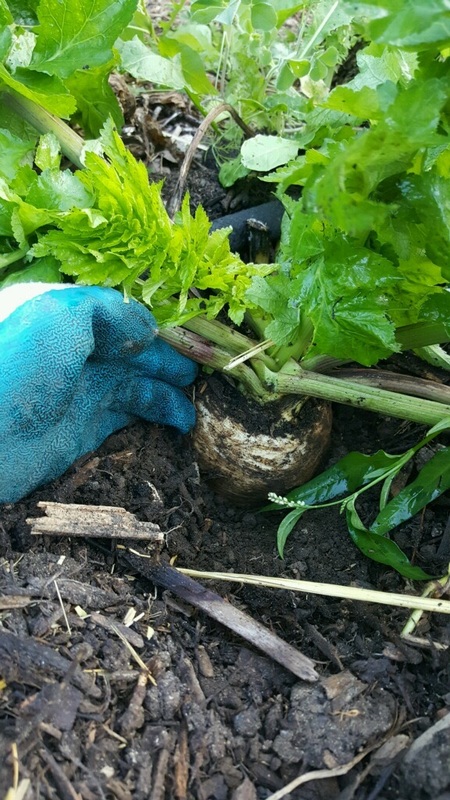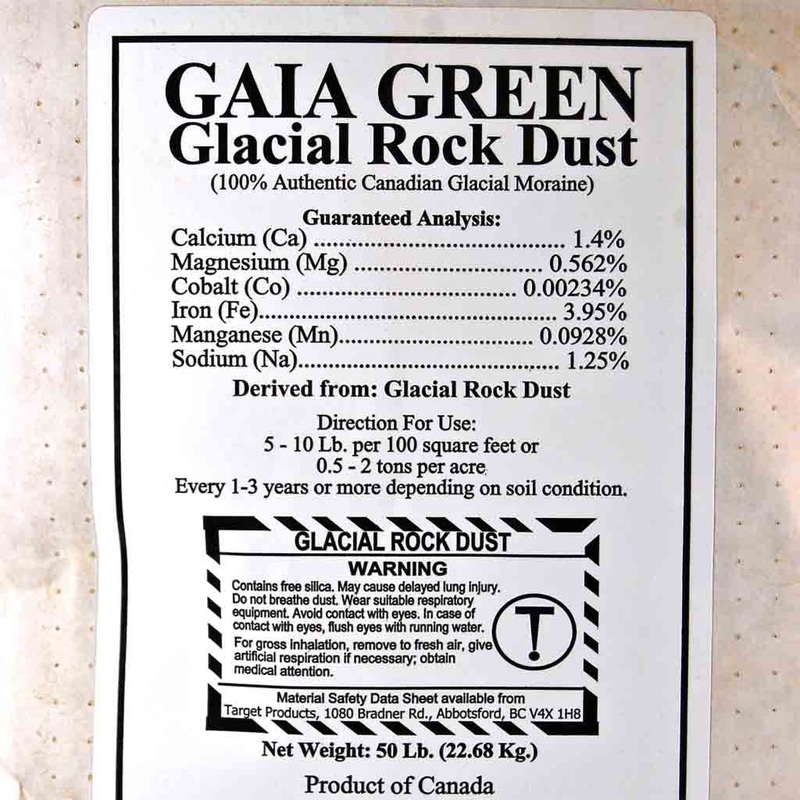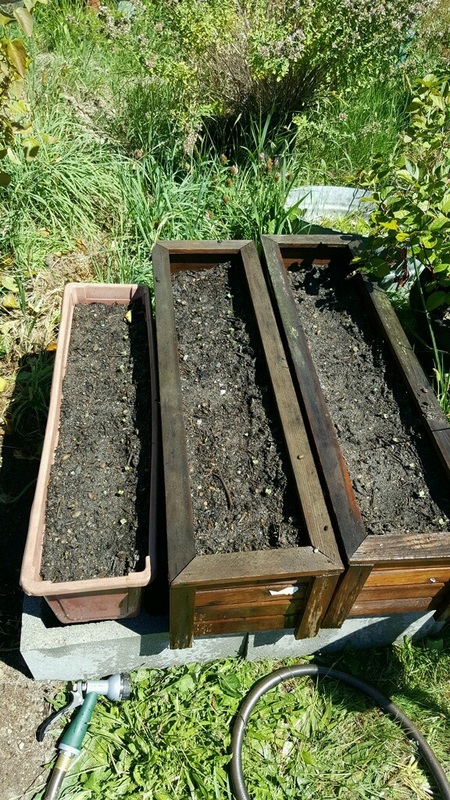| Hi! I'm Eliza, the newest garden intern at Songaia. Somehow, I've gotten away with not writing a blog despite being here for about a month now. Patricia finally noticed and reminded me of my blogging duties, which I will now proceed to fulfill. I hope you enjoy! One thing that immediately attracted me to Songaia was the complete devotion to permaculture in their garden. I have studied permaculture for around 5 years now and it has radically changed my life. Permaculture is a philosophy that emphasizes sustainability, biodiversity, and community through the mimicry of nature. When applied to agricultural practices, permaculture results in an increase in overall plant health, beneficial insects, and yields. Simultaneously, resources such as energy, fertility, and water are conserved, reused, and regenerated. You can see permaculture in action at the Songaia garden, where we grow enormous veggies without any toxic fertilizers or pesticides. In addition to being a permaculture nut, I am a scientist by training (PhD in microbiology). I LOVE doing experiments, observing the details, and analyzing data. Therefore, when Douglas mentioned that he had 100 untouched pounds of rock dust in his house, I immediately thought of the dozens of tantalizing opportunities that presented themselves. Jacob, the other garden intern, immediately and enthusiastically volunteered to help with our machinations. For those of you who aren't in the loop, rock dust is an agricultural amendment consisting of *drum roll* ground up rocks. Rock dust, which is often derived from igneous (volcanic) rocks, adds trace minerals and can purportedly enhance plant growth and soil ecology through its paramagnetic properties. Plant and soil microbes utilize a spectrum of minerals (not just the usual boring nitrogen, phosphorous, and potassium) to achieve optimum growth. Therefore, rock dust acts as a mineral fertilizer that can provide micronutrients if your soil is lacking. Materials and methods: We used three garden planters approximately 2.5 square feet filled with garden soil. Planter 1 (on left) is the control, which contains only soil. Planter 2 (middle) contains soil with 1.6 oz of rock dust and planter 3 (on right) contains soil with 3.2 oz of rock dust. We planted two rows of radishes in each planter (watermelon on left, purple on right) approx. 1 inch apart. We water the seedlings every other day. Thanks for reading, Cheers, Eliza | Check out this random parsnip I extricated today, as well as this massive mystery squash, guaranteed to feed us for months. If I haven't lost you yet, let me share the details of our exciting experiment. Purpose: To determine the effect of Gaia Green glacial rock dust (see pic) on the growth of radish plants (watermelon and purple) applied at a concentration of 5lb and 10lb per square foot. Hypothesis: Planters containing soil amended with rock dust will be able to support increased plant growth versus soil without rock dust. Results: (in progress) Aug 10- planted seeds Aug 14- seedlings germinated (see photo) Aug 16- seedlings growing (see photo) As of yet, I cannot discern a significant difference between the control and the +rock dust groups. One possibility is that our garden soil already contains sufficient nutrients and therefore rockdust is not a limiting factor to their development. Or, it may take more time see a noticeable difference emerge. Regardless, we will continue to carefully observe the growth and health of each group over the next several weeks. Because radishes grow relatively quickly, we hope to obtain results in a timely fashion (ideally before I leave in mid September!). When the experiment is over we will be sure to publish our results in the prestigious Songaia blog-- so keep yourself posted! |
|
1 Comment
5/9/2023 03:39:33 am
Please always post this kind of blog Eliza, Thank you Patricia for always reminding Eliza of her blogs duties.
Reply
Leave a Reply. |
AuthorGarden bloggers are community members, volunteers and interns at Songaia. Archives
July 2024
Categories |







 RSS Feed
RSS Feed